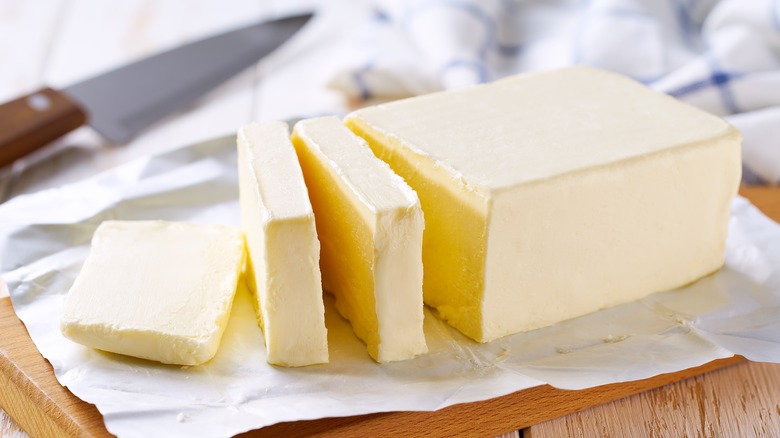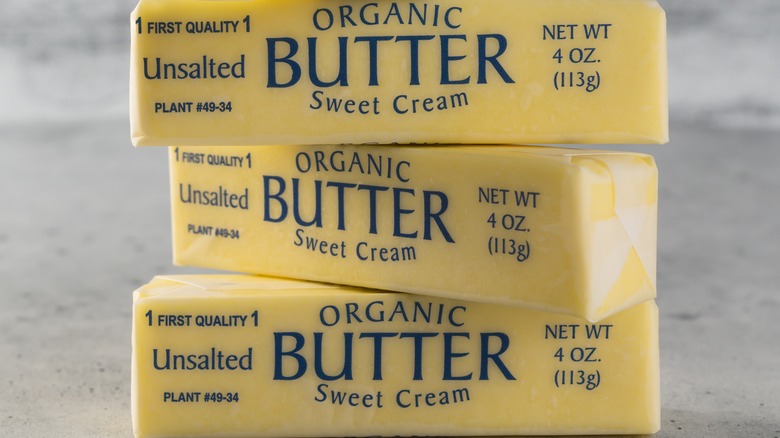Why Making Your Own Canned Butter Is A Dangerous Mistake
We may receive a commission on purchases made from links.
Perhaps you love butter with the intensity of 1,000 Julia Childs or fear a dystopia where there's nothing to spread on toast. Whatever the case, one day, you may feel compelled to stockpile bread's best friend. If you're into DIY foodstuffs, then canning some cheap butter at home might seem like a good bet. However, you'd be gambling with your health because that approach poses a botulism risk.
A potentially lethal disease that wreaks havoc on the nervous system, botulism comes from multiple toxin-producing bacteria such as Clostridium botulinum. It can paralyze and weaken muscles, impairing a person's ability to breathe, talk, and swallow. While botulism is rare and highly survivable with proper treatment, recovery might require weeks or months of hospitalization. The negative effects could even linger for years, and permanent nerve damage is possible.
What makes home-canning butter so hazardous? For starters, its acidity is too low (which actually means its pH is too high) to thwart botulism spores. Foods with a pH of 4.6 and under are acidic enough to stop the bacteria from growing and unleashing toxins. Sweet cream butter has a pH between about 6.0 and 6.7. Fermented butters go as low as 4.4, but some have a pH of around 5.0. Low oxygen levels promote spore growth as well, and canning minimizes a food's oxygen exposure by design. Admittedly, some home-canning methods haven't been scientifically studied, making the precise danger level unclear, but wouldn't you rather just avoid food poisoning anyway?
Opening a can of germs
Maybe you're wondering whether the main safety threat arises from making avoidable mistakes while canning food. After all, government agencies like the FDA recommend using pressure-canners for low-acid items, and not everyone does this when attempting to preserve butter. Problem solved, right? Wrong. Although the high temperatures achieved by pressure-canning generally neutralize botulism germs lurking in low-acid foods, fat provides a degree of protection for spores and could keep some of them alive. Butter consists of about 80% milkfat, creating a valid concern.
In short, there's no known safe way to home-can butter. To make matters worse, you can't rely on your senses to detect contamination. Whereas butter that has gone rancid may taste like baby vomit or soap and smell icky, botulism toxins don't have a recognizable flavor, aroma, or appearance. Simply tasting the tainted food could kill someone.
Fortunately, commercially canned butter is a thing. Unfortunately, you'll probably need loads of dough to buy it in bulk, and satisfaction isn't a given. Walmart, for instance, charges roughly $114 to ship a dozen 12-ounce cans of Red Feather butter. While 10 out of 14 reviewers rated the product highly, the rest were less impressed. Two customers criticized the taste, including one who said their batch had a fish-like flavor and odor. But at least it's not as fishy as canning your own butter.

